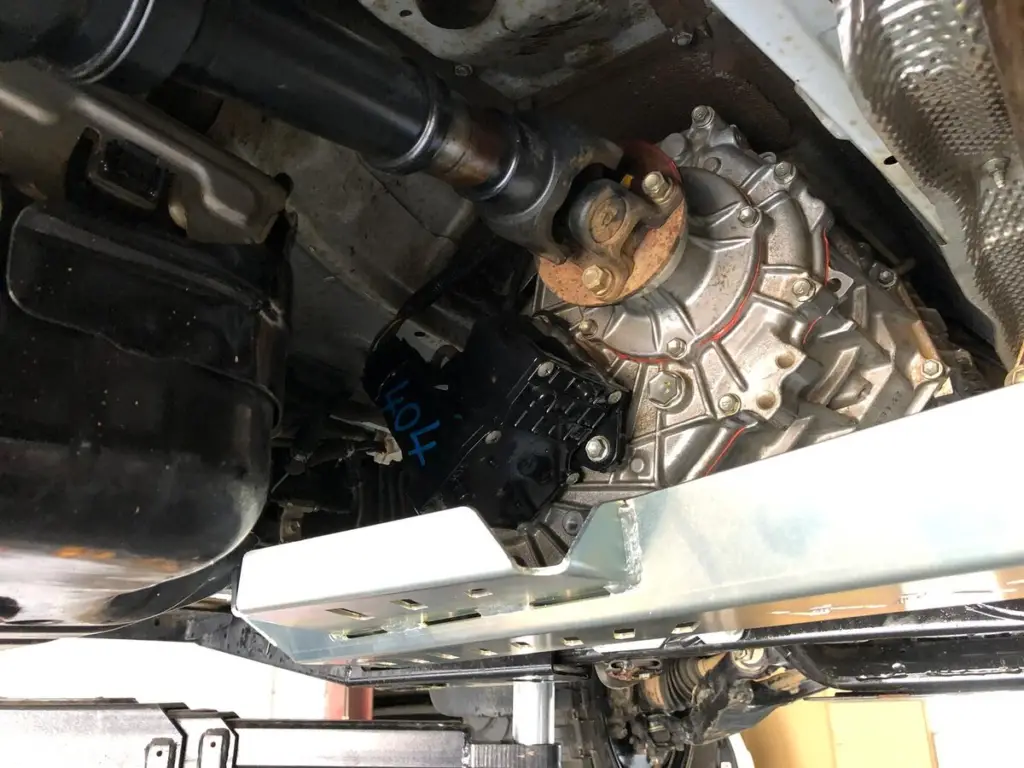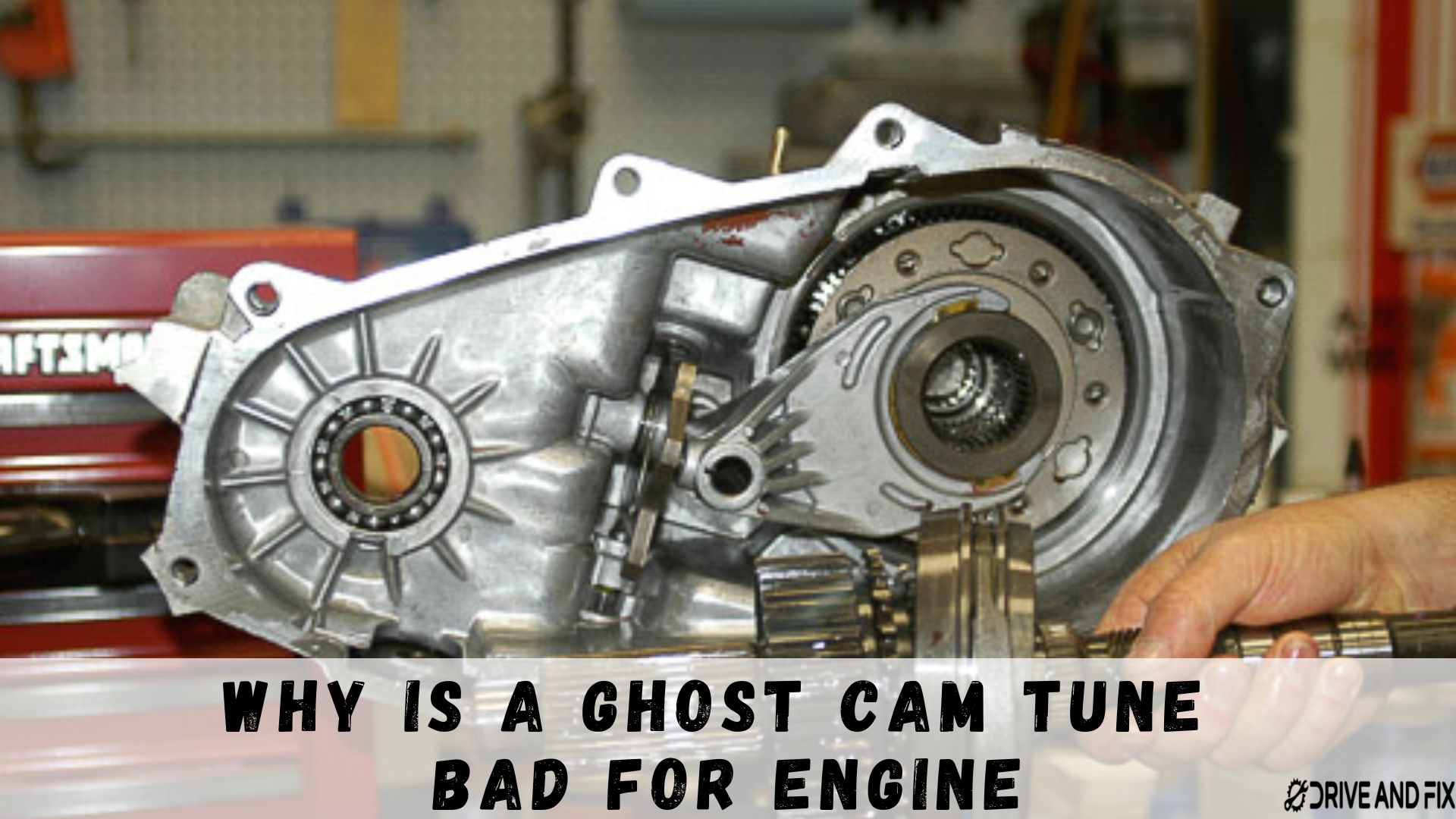Have you ever heard a loud grinding noise when switching your vehicle from two-wheel drive to four-wheel drive? Or feel a shudder or vibration when you accelerate on a slippery road? If so, you might need help with your transfer case. A transfer case is vital to the drivetrain system in four-wheel-drive and all-wheel-drive vehicles. It allows the driver to choose different drive modes and distributes the engine power to the front and rear wheels.
However, like any mechanical part, a transfer case can wear out or malfunction over time, causing various symptoms and issues. Continue reading as we will explore the possible causes and solutions of transfer case noise when accelerating and some preventive measures to keep your transfer case in good condition.
Functions Of A Transfer Case

A transfer case is key for the performance and safety of a four-wheel or all-wheel drive vehicle.
- It enables the vehicle to adapt to road conditions and terrain, improving fuel efficiency and handling.
- Protects the transmission and the differentials from damage by reducing their stress and wear. Without the transfer case, a four-wheel or all-wheel drive vehicle would not function properly or safely.
- Transmits power from the transmission to the front and rear axles via the drive shafts.
- Synchronizes differences between the rotation of the front and back wheels, which is necessary because they never turn at the same speed.
- Allows the driver to switch between different drive modes, such as two-wheel drive, four-wheel drive high, and four-wheel drive low.
- It can contain one or more low-range gears for off-road use, providing more torque and traction at lower speeds.
Read Also: Can You Drive With A Bad Fuel Tank Pressure Sensor – Is It Safe?
Common Symptoms of a Bad Transfer Case

- Difficulty shifting gears: A faulty transfer case causes problems with shifting between gear ranges, such as two-wheel drive, four-wheel drive high, and four-wheel drive low. This can be due to low fluid level, damaged linkage, or internal failure of the transfer.
- Grinding noise: If you notice a loud grinding noise when trying to switch between modes of drive or when accelerating, that could be due to a broken snap ring, a loose chain, bad bearings, or damaged gears inside the transfer case.
- Shudder or vibration normally occurs when driving in four-wheel drive mode or on slippery roads due to excess contaminants in the fluid, worn-out transmission motor or engine mounts, or damaged skid plate that contacts the transfer case.
- Four-wheel drive engagement and disengagement issues: This normally happens when engaging and disengaging the four-wheel drive mode due to faulty sensors, switches, solenoids, or actuators that control the transfer case operation.
- Fluid leaks under the transfer: Worn or damaged seals, gaskets, or bearings allow the fluid to escape from the transfer case.
- Four-wheel drive warning light illumination: You will notice the four-wheel drive warning light on the dashboard due to a transfer case system malfunction that affects its performance and safety.
These symptoms can affect your vehicle’s drivability and fuel efficiency and cause damage to other components. Therefore, diagnosing and fixing a bad transfer case as soon as possible is important.
Causes of Transfer Case Noise When Accelerating

Some of the possible causes of transfer case noise when accelerating are:
- A broken snap ring that holds the output shaft in place
The output shaft is part of the transfer case that sends power to the front and rear axles. It is held in place by a snap ring at the tail end. If the snap ring breaks, the output shaft can move in and out and misalign with the gears, causing a grinding noise.
- Excess contaminants in the fluid due to normal clutch plate wear
The transfer case uses fluid to lubricate and cool its internal components. Over time, the clutch plates that engage and disengage the four-wheel drive mode can wear out and create excess contaminants in the fluid. This can result in a howling, whining, or whirring noise when driving in four-wheel mode or on slippery roads.
- Damaged skid plate that contacts the transfer case
The skid plate is a metal shield that protects the transfer case from rocks and debris. If the skid plate is damaged or bent upward, it can contact the transfer case and cause a clunking or rattling noise when accelerating.
- Worn-out transmission motor or engine mounts that cause rattling
The transmission motor and engine mounts are rubber or metal parts that support and isolate the transmission and engine from the chassis. If worn out or loose, they can cause a rattling noise when accelerating due to excessive vibration.
- Loose chain, bad bearings, or damaged gears inside the transfer case
The transfer case has chains, bearings, and gears that transfer power between the input and output shafts. Any loose, worn-out, or damaged components can cause a grinding or clicking noise when accelerating due to metal-to-metal contact.
Diagnose and fix these causes as soon as possible since they can affect the performance and safety of your four-wheel drive system and damage other parts of your drivetrain.
Possible Solutions and Preventive Measures For Transfer Case Noise During Acceleration

- Replacing the broken snap ring and checking the output shaft alignment: If the snap ring that holds the output shaft in place is broken, replace it with a new one, also check the output shaft alignment and adjust if necessary to prevent the output shaft from moving in and out causing a grinding noise.
- Draining and refilling the transfer case fluid with the correct type and amount: If you realize the fluid is contaminated with excess clutch plate wear particles, drain it and refill it with the correct type and amount. This can help reduce the howling, whining, or whirring noise caused by fluid friction and improve the transfer case performance.
- Inspecting and repairing the skid plate and its mounting bolts: If the skid plate is damaged or bent upwards, inspect and repair or replace it if necessary. Check the mounting bolts and tighten them if loose. This can prevent the skid plate from contacting the transfer case and causing a clunking or rattling noise.
- Replacing the worn-out transmission motor or engine mounts: If the transmission motor or engine mounts are worn out or loose, replace them with new ones. This will reduce the vibration and rattling noise caused by excessive engine or transmission movement.
- Rebuilding or replacing the transfer case if the internal components are damaged: If the chain, bearings, or gears inside the transfer case are loose, worn out, or damaged, they should be rebuilt or replaced by a professional mechanic. This can eliminate the grinding or clicking noise caused by metal-to-metal contact.
These solutions can restore the normal function and sound of your four-wheel drive system and prevent further damage to your drivetrain.
You May Also Like: Alpine Vs Harman Kardon Sound System Compared
FAQs

How much does it cost to repair a transfer case?
The cost of repairing a transfer case depends on the extent of damage and the type of vehicle. According to some estimates, the average cost of replacing a transfer case ranges from $1,000 to $3,000. The cost of rebuilding a transfer case ranges from $800 to $1,500. Replacing a snap ring ranges from $200 to $400. Changing the transfer case fluid ranges from $50 to $100.
How do I fix a transfer case noise when accelerating?
Some of the possible solutions and preventive measures for transfer case noise when accelerating are replacing the broken snap ring and checking the output shaft alignment, draining and refilling the transfer case fluid with the correct type and amount, inspecting and repairing the skid plate and its mounting bolts, replacing the worn out transmission motor or engine mounts, rebuilding or replacing the transfer case if the internal components are damaged.
What is a transfer case, and how does it work?
A transfer case is part of the drivetrain system in four-wheel and all-wheel drive vehicles. It connects the transmission to the front and rear axles and allows the driver to switch between different drive modes, such as two-wheel drive, four-wheel drive high, and four-wheel drive low. The transfer case also distributes the engine power to the front and rear wheels according to the selected mode. A transfer case can be mechanical or electronic, depending on the type of vehicle and its features.
Verdict
A faulty transfer case creates a disturbing noise when accelerating and other signs and problems. This noise may result from various reasons, such as a snapped snap ring, dirty fluid, bent skid plate, loose mounts, or damaged internal parts. Therefore, if you notice a grinding, howling, whining, whirring, shudder, or vibration noise from your transfer case when accelerating, do not neglect it. Take action right away. Identify and fix the transfer case as soon as possible to avoid further harm to the drivetrain and enhance the performance and safety of the vehicle.
You may also be interested in:
Can i Use 5w20 Instead of 0w20 in My Car?
Why It Feels Like Rumble Strips When Accelerating My Car?
How Much Does It Cost to Change Car Interior Color?
Toyota Oil Drain Plug Torque Specs- Tips And Tricks For A Smooth Oil Change
Why My Car Heating Blowing Cold Air?
Toyota Oil Drain Plug Torque Specs- Tips And Tricks For A Smooth Oil Change


